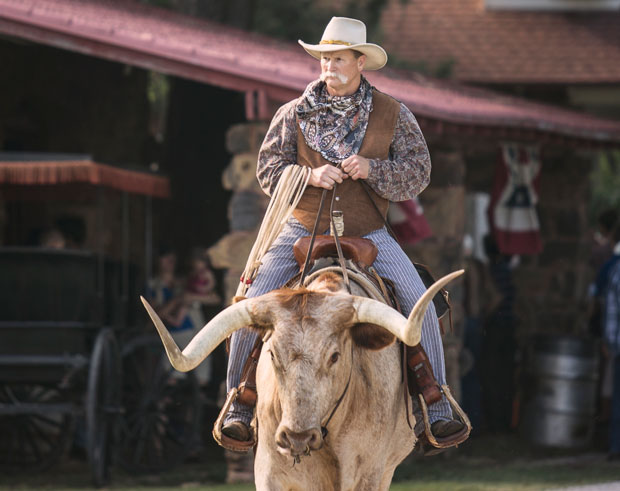
[dropcap]Each[/dropcap] year during the late 19th and early 20th centuries, Dan and Libbie Midgley pulled up stakes from their farm in northwest Oklahoma to travel the nation, selling their lucrative hay and wheat harvests. Upon their annual arrival back in Oklahoma, they returned with a harvest of a different sort: an eclectic array of geological treasures and artifacts.
Now, over a century since the couple first settled their 160-acre farmstead, the Midgley Museum, or the “Rock House” as it is locally known, occupies a place as one of the most beloved attractions in Enid. It was the couple’s fondest dream that their fascinating collection of minerals, gems, fossils and more — indeed, their home itself — would become an exhibit for all to see. In fulfillment of her parents’ wishes, Eva Midgley lovingly arranged the couple’s artifacts collected during their travels, as well as their day-to-day possessions for public display, and the museum was opened to the community in 1991. Upon Eva’s death, it was willed to the City of Enid and is now operated by the local Masonic Lodge and Daughters of the Eastern Star Chapter.
Home to an unusual and intimate snapshot of the geology, lifestyles and history of the southwestern United States, the house serves as the centerpiece of the museum. It was built by the couple in 1947 from stones and petrified wood excavated during their travels. Greeting visitors who come to the museum grounds is a 7,000-pound. petrified tree stump, brought by the family to Enid from the Woodward area.
“It’s a fabulous house,” says Judy Garber, co-director of the museum, “and everything in it is fabulous.”
Stepping into the museum’s Trophy Room is to be transported to a big game safari. In addition to game birds and animal hides, the room is home to stuffed specimens of royal Canadian elk, moose, reindeer, a buffalo weighing in at nearly a ton, javelinas (pig-like creatures from Central and South America) and other wild game from the family’s hunting trips abroad. Due to the weight of the hunting trophies, the stonemasons brought in from Texas to construct the home built extra reinforcements into the walls of the room.

In the other rooms visitors can find an extensive variety of unique geological wonders, mostly collected from areas of the American Southwest. A gem of a different sort for geology lovers, the exhibits include more than 30 varieties of fossils, agates, petrified wood, crystals and more. A small closet, called the Black Light Room, is dedicated to displaying rocks and minerals that may look ordinary by daylight, but put on a fluorescent light show under the right conditions. Elsewhere in the museum, marvels include a large fireplace carved from fossilized stone and the largest gypsum selenite crystal ever retrieved from Oklahoma’s Great Salt Plains.
However, the Midgley Museum is much more than simply a showpiece for physical treasures: the museum offers a peek into the everyday lives of this adventurous pioneer couple. In addition to the geological curiosities, visitors can witness more intimate objects such as the couple’s wedding cigars and English wedding china, their musical instruments collection and their daughter Eva’s antique toys. The family furnishings and priceless silver still occupy honored places among the collection, along with quilts, coins, stamps, arrowheads and even shark’s teeth. Other objects trace the history of the couple’s activism in their local community.
Garber estimates that despite limited hours (the museum is often closed during the winter), between 500 and 800 visitors are drawn to the museum annually. If you would like to join them, the Midgley Museum is located at 1001 Sequoyah Drive in Enid, Okla. Admission is free, although donations are welcome.


























